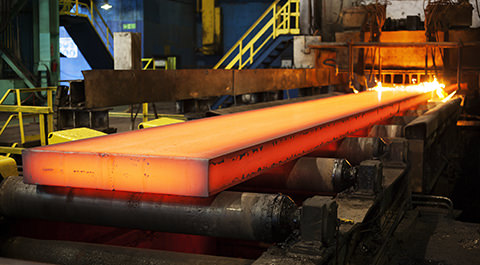Problem
In the steelmaking process, a basic oxygen furnace (BOF) refines molten pig iron and scrap into steel. This process typically involves multiple stages, but starts with scrap and molten pig iron entering a blast furnace. During this process significant ash, soot and other pollutants are generated and enter, through a duct, the BOF's evaporative cooling tower. Here, the gas enters the tower's apex where it is quickly and powerfully cooled by a spray via nozzle lances. The polluted dust then falls to the tower's base where it's incinerated. If the nozzle lance layout is not optimal, as was the case with our customer, severe dust lumping occurs, where spray that does not evaporate sticks to the wall and collects dust. Our task was to design an optimal nozzle layout to match the gas flow field, while minimizing wall wetting in short time and space domains.
